Joy Curtis
We recommend the latest version of Safari, Firefox, Chrome, or Microsoft Edge.
Joy Curtis
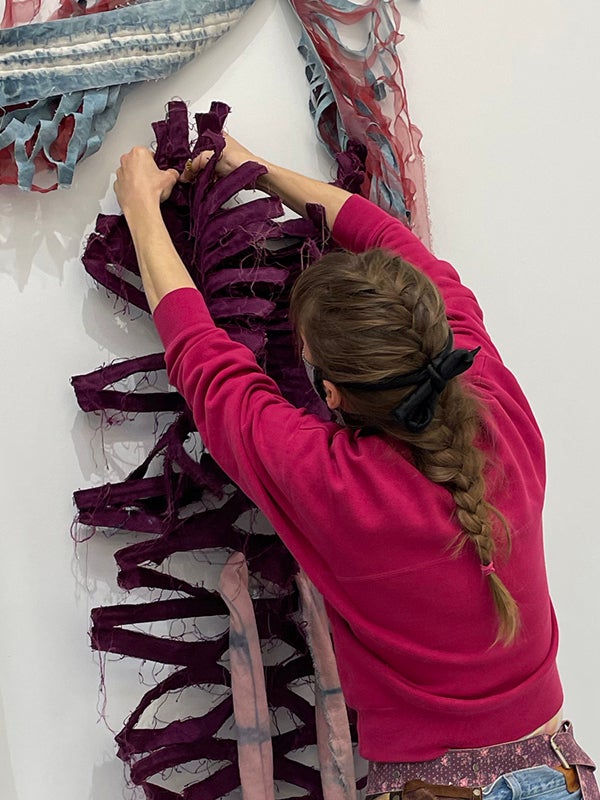
Joy Curtis’s sculptures – comprised of hand-dyed canvas, commercially printed fabrics, and cast wax and bronze – are created in her studio in Ridgewood, Queens. The artist’s use of traditional dyes like indigo and cochineal points symbolically to cultural histories of colonial agriculture and subjugation. Curtis’s materials combine into quasi-figurative forms, creating visual fables that propose a hopeful kind of reckoning and healing.
This edition of KLAUSGALLERY.cloud focuses on one of Curtis’s sculptures, The Inner Hospital, which is currently on view in her exhibition Skeleton Woman, at Klaus von Nichtssagend Gallery in New York.
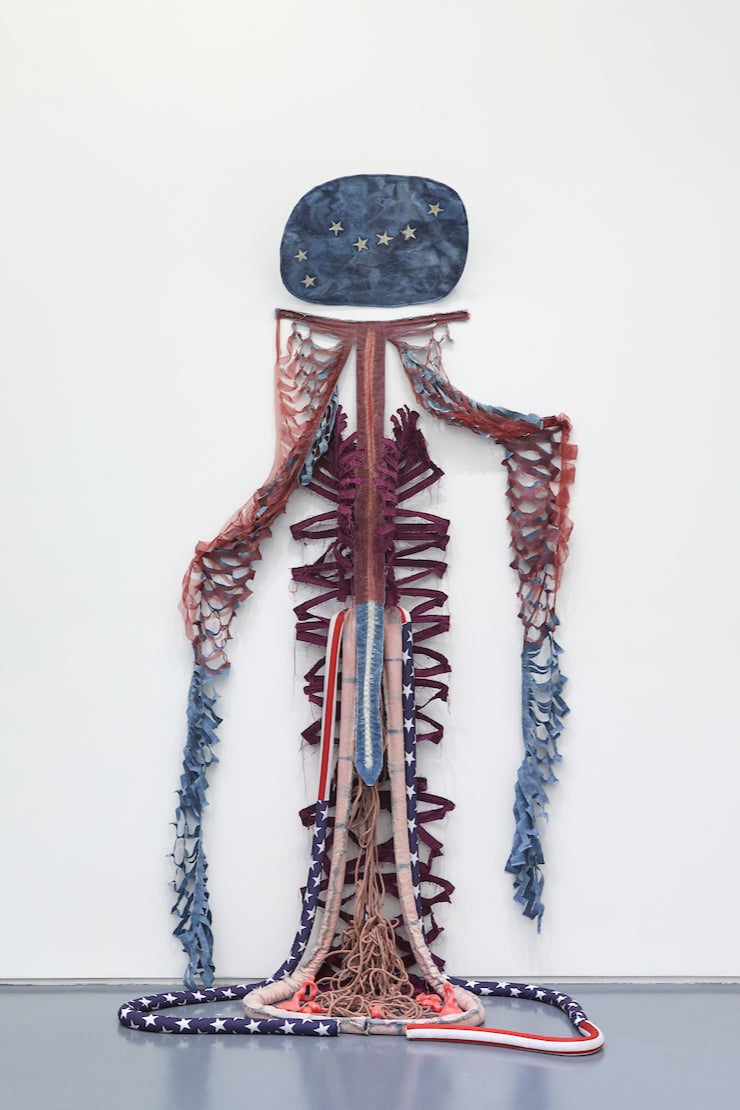
“I informally imagined the sculpture as a feminine principle and she came to resemble a Virgin Mary who can be synchronized with the Orisha of the deep ocean element and women who dye. Her image is all over [my] neighborhood, so she’s in my own active image memory. But in general, she is a healing principle. When I included the pink and blue tube connected end to end, it made a loose circle, and I realized that this would be the role of this particular work.”
– Joy Curtis
Curtis sees the big dipper depicted on the top of the sculpture as a contextualizer during this overwhelming time period (2020). Looking at the night sky during the summer was a balm reminding Curtis that we are elementally similar to the stars.
The ropey “guts” and spandex American flag tube represent the feminist concept that the personal is political. Placed on the ground are tiny wax organs and a bronze sacrum. The sacrum represents a biological plug-in that brings energy to the body moving up the spine—when fully engaged and conscious, energy shoots out of the top of the head and makes a contribution to a greater good.

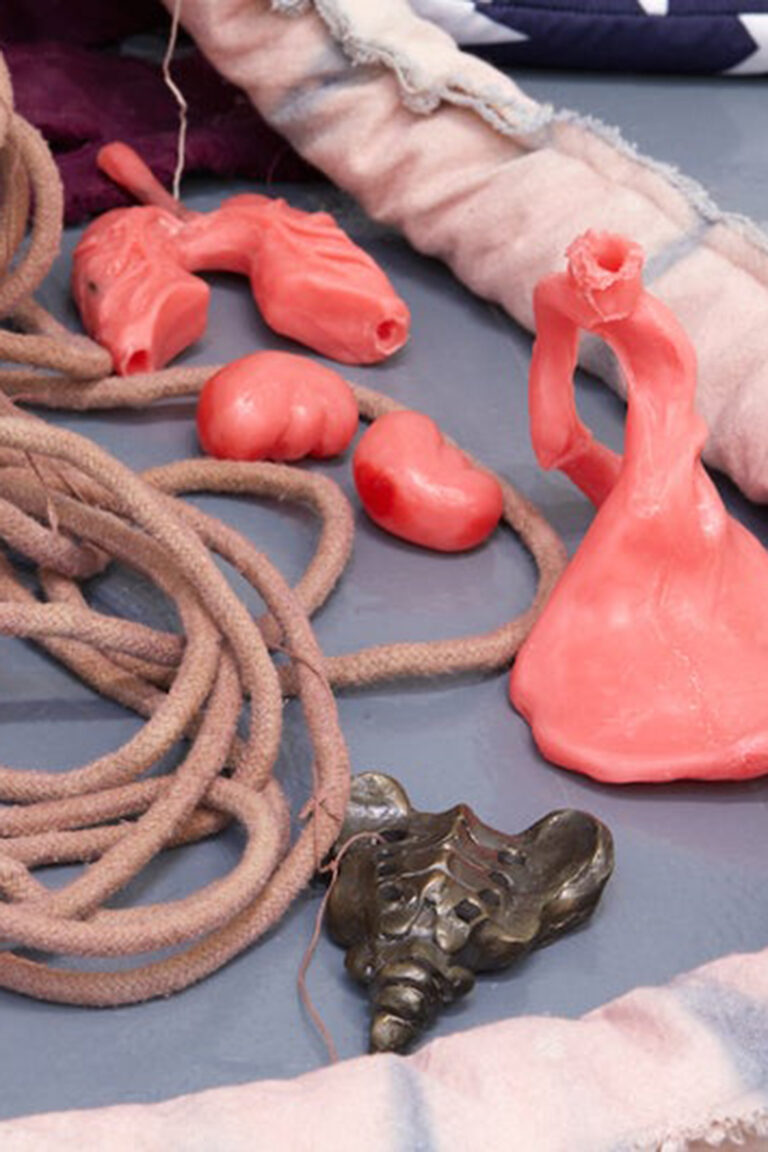
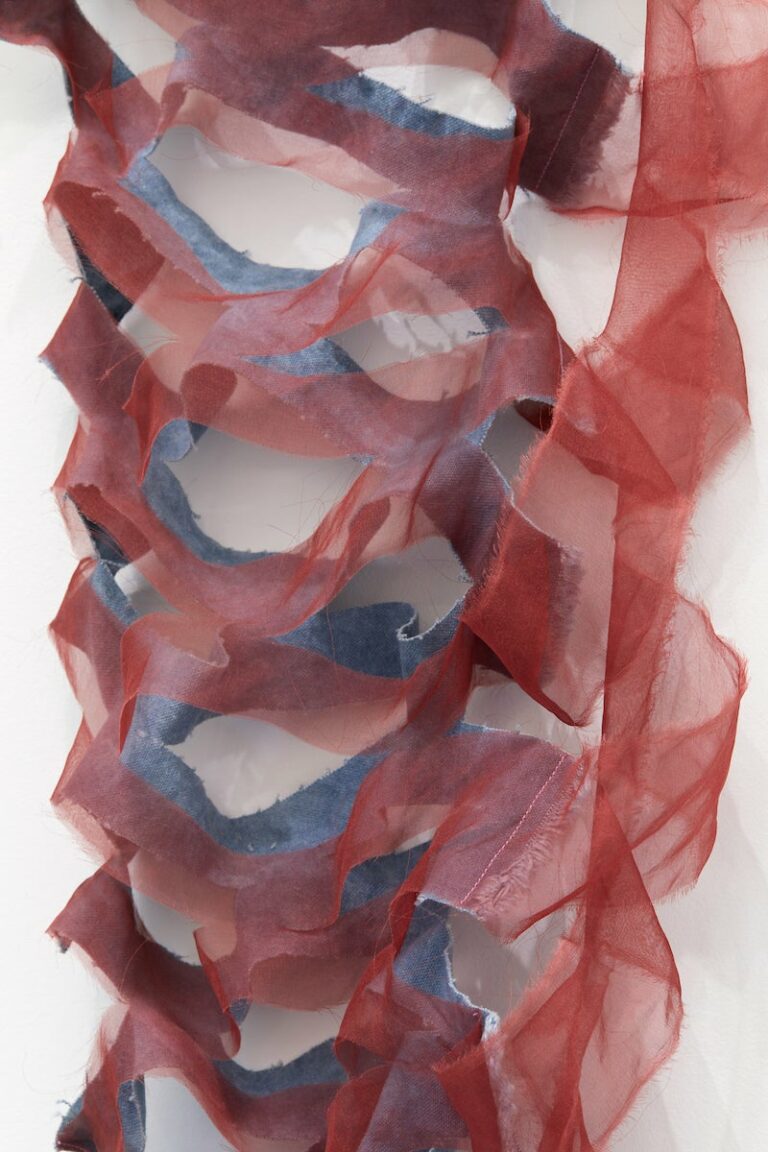
The slideshow below shows images of the work in progress from Curtis’s studio in Ridgewood, Spring 2020
Curtis[‘s sculptures] hang against a wall, at once skeletons and costumes. Each has a rib-cage-like armature of steel inside a sewn and frayed fabric casing, which extends downward, like a rope ladder, onto the floor. Their visceral heft is achieved by hand-dyeing cotton duck with madder root and indigo: materials associated with the African slave trade, used . . . to suggest bodies.

The fabric elements of The Inner Hospital were soaked in indigo and cochineal. The dyes have gone back to the realm of the traditional arts, for example, in Oaxaca, Indonesia, West Africa, Peru and are the same organic pigments used to color the original American flag, which was made of wool. Curtis implemented batik and shibori resist techniques to create the sculpture’s spine and Big Dipper imagery.
The deep blues of the piece were soaked in two vats of varying dye recipes that incorporated indigo powder, fructose, pickling lime, stale urine, dates, banana, and madder root.
The rich reds and purples were dyed with traditional carmine, derived from cochineal (a scale insect). Curtis learned cochineal dying techniques from Oaxaca fabric artist, Josephina Mendez Lopez (pictured left). Different tones were achieved with individual modifiers, such as citric acid, and through dying at different stages of pigmentation.
Indigo was one of the main agricultural exports of the slave states in the antebellum USA, while cochineal was the cornerstone export of the Spanish Empire in Central and South America.
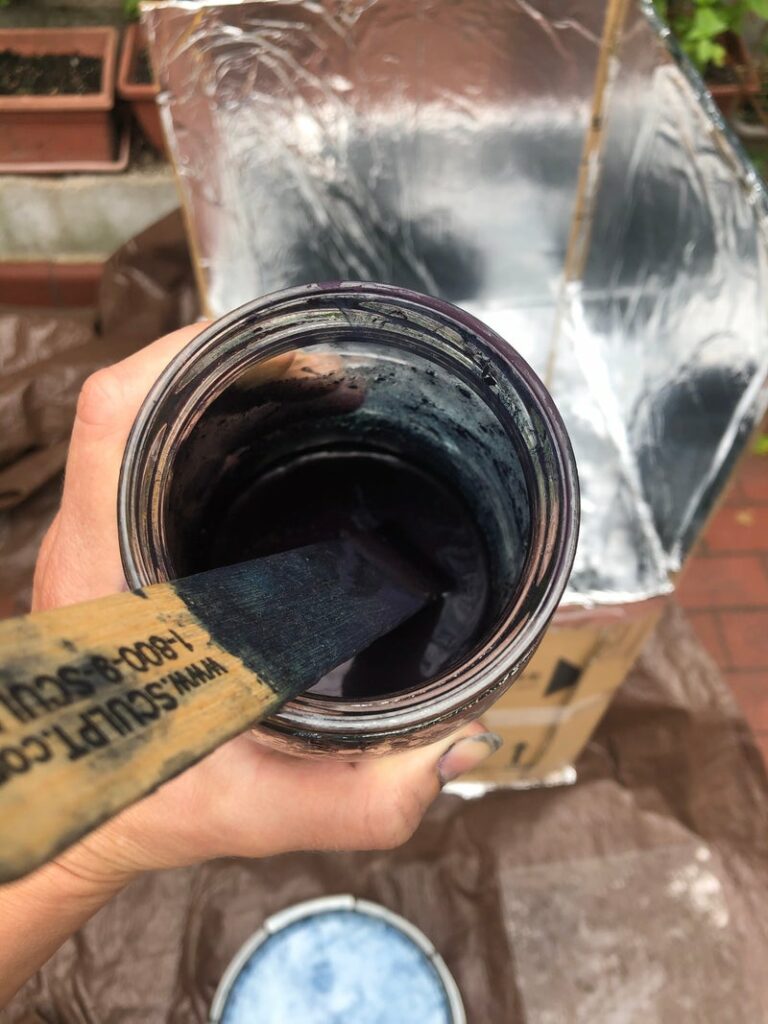
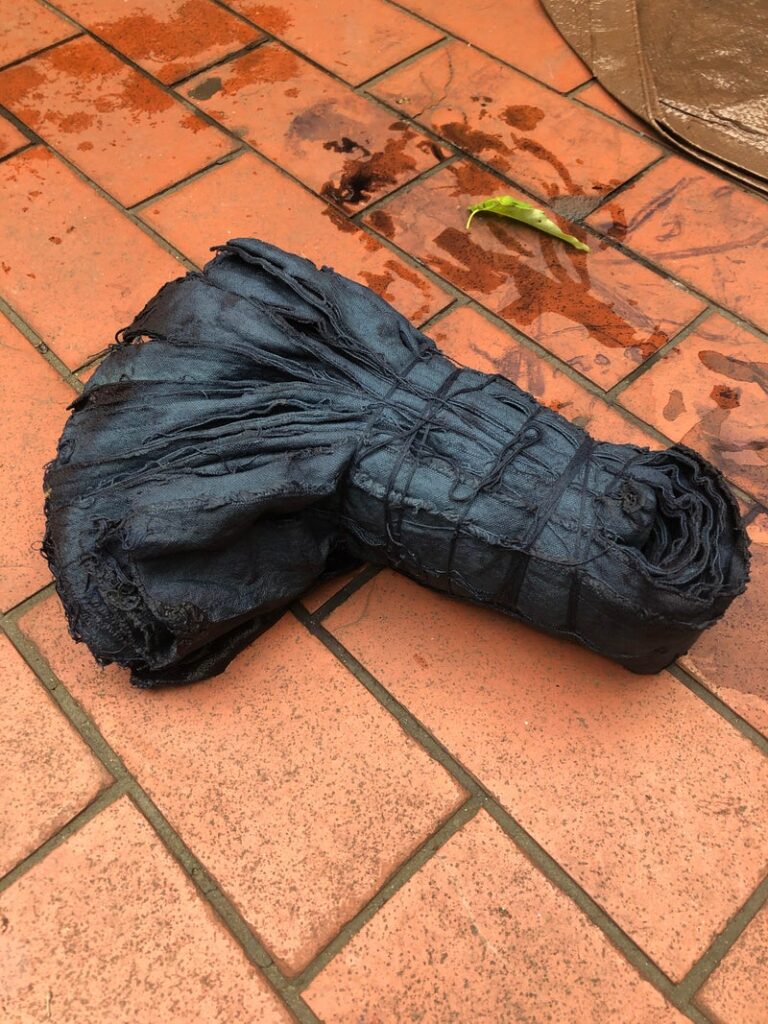
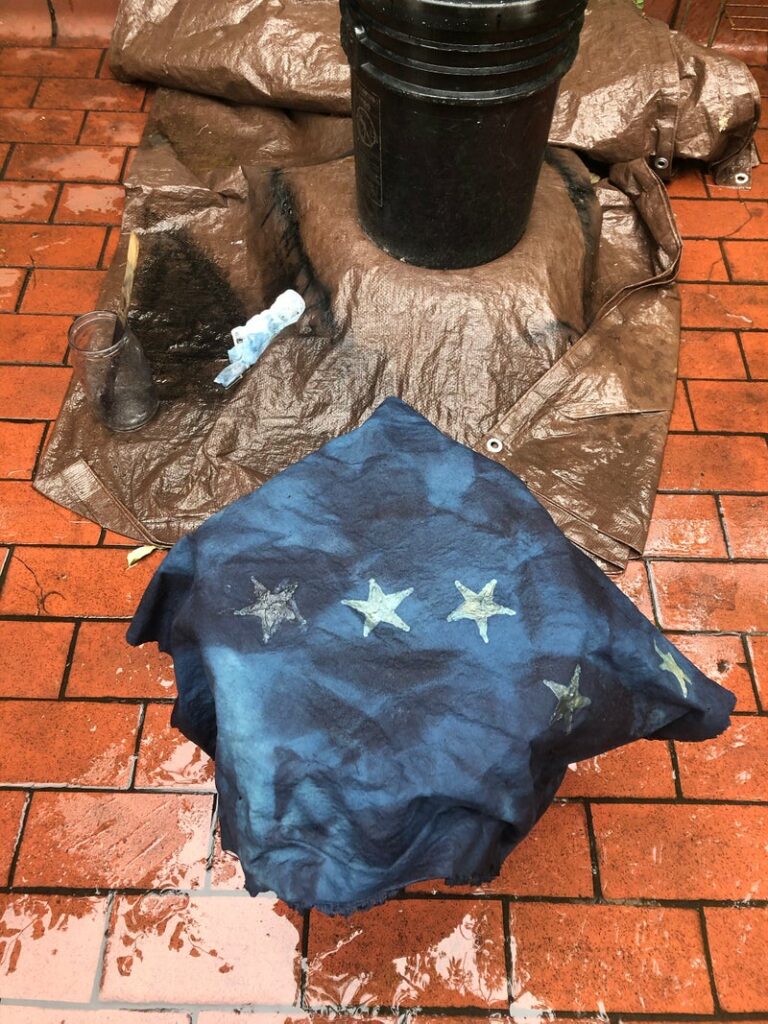
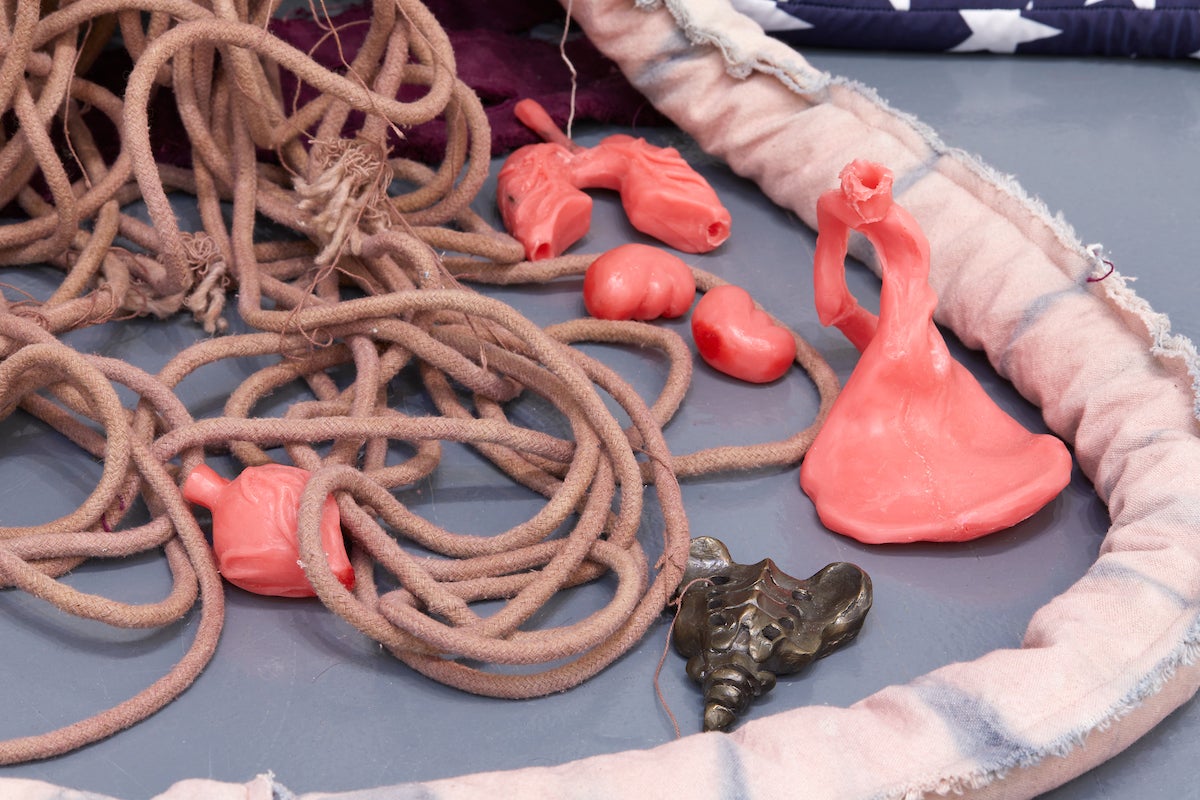
I made the small organs from clay and then cast them in wax, a preliminary step in the “lost wax” casting method. The removal of organs is an image in shamanisms the world over. It’s part of healing and making yourself anew. The body goes down into the underworld and the organs are removed, examined, “polished”, then returned to the body and transformation takes place. I imagined this transformation being work on the inner life, and our relationships to each other, the earth, and the political body.
– Joy Curtis
Joy Curtis and Melissa Brown discuss their experiences participating in a New York-based critique group called “Hearts Gymnastics.” The group has 9 member artists and meets about once a month in one participant’s studio for discussion about their work.
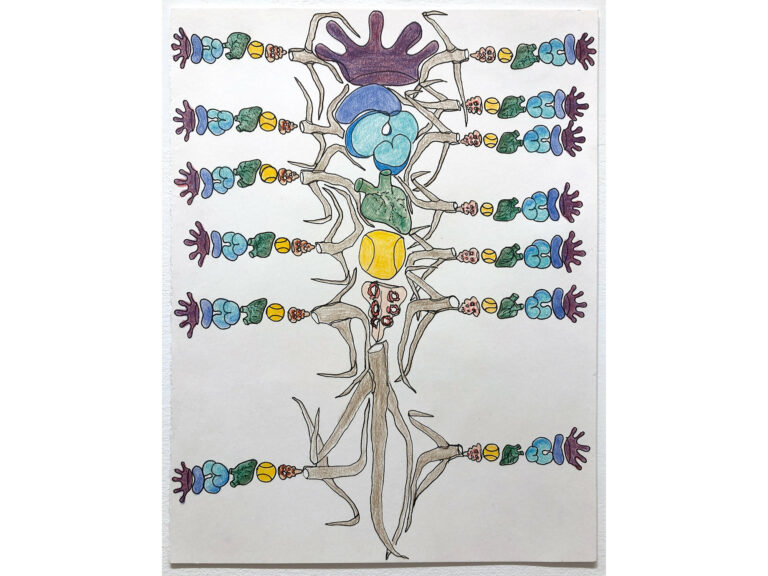
11 x 8 1/2 inches
ink and color pencil on paper
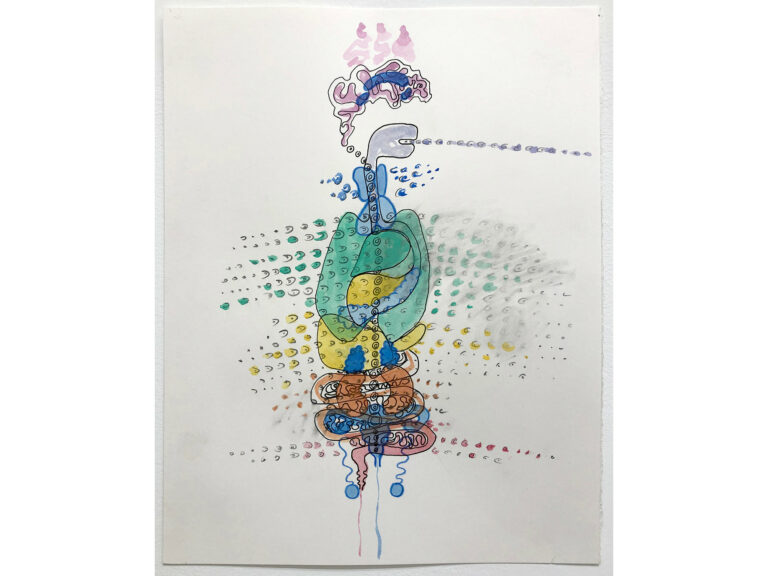
11 x 8 1/2 inches
watercolor, pencil, and ink on paper
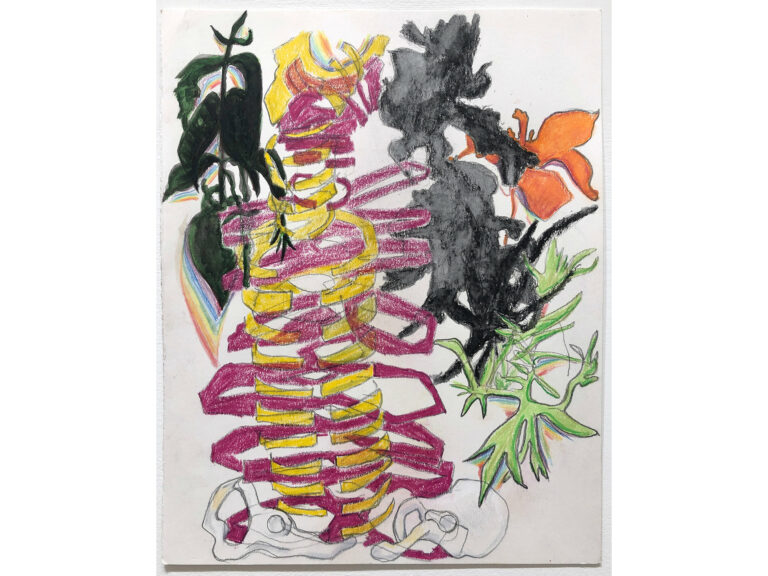
11 x 8 1/2 inches
color pencil, watercolor, sumi ink on paper